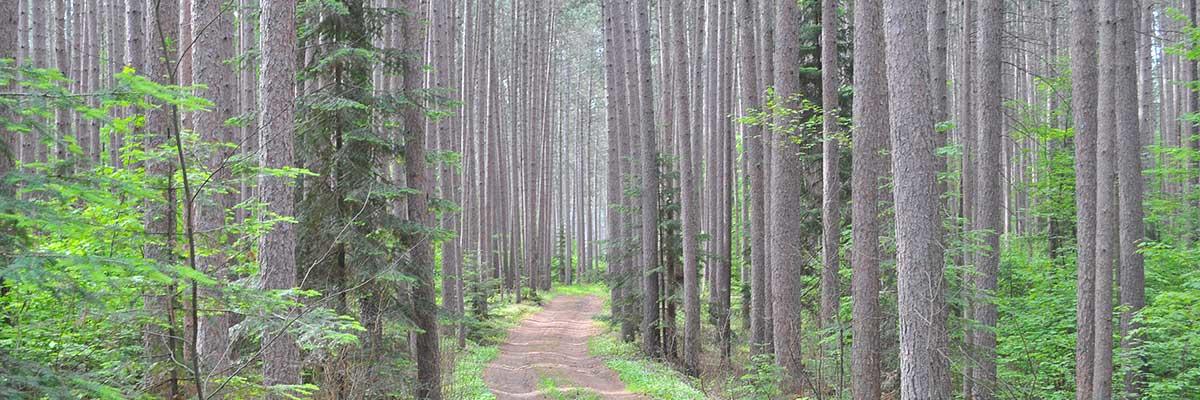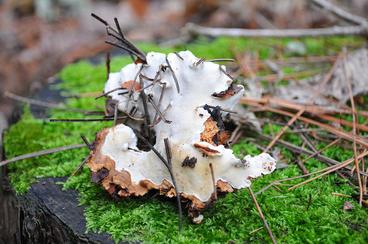
Heterobasidion Root Rot in Minnesota
Heterobasidion annosum sensu lato is one of the most important pathogens in conifer forests of North America where it causes root rot and tree mortality. Although present in the eastern and western regions of the United States, the north central United States had been free of this pathogen until it was found in Wisconsin in 1993 and the lower peninsula of Michigan in 2011. Heterobasidion irregulare has spread widely in Wisconsin and is currently found in 24 counties (Wisconsin Department of Natural Resources) with three of those counties adjacent to the border with Minnesota. A survey conducted in red pine (Pinus resinosa Aiton) plantations that had been previously thinned in southeastern Minnesota found groups of dead and dying trees, occurring in a circular pattern, typical of root rot. After initial molecular detection was positive, cultures were obtained from infected wood tissue and fruiting bodies developed in affected trees.
Red pine is an important tree species in Minnesota with an estimated 662,000 acres of red pine forests. The establishment of this pathogen in the state and knowledge of its spread throughout Wisconsin in the last 20 years demonstrates the need to implement management strategies for controlling the disease in Minnesota.
